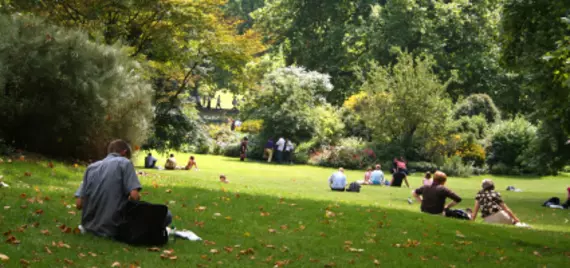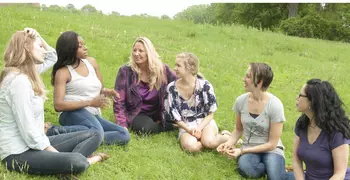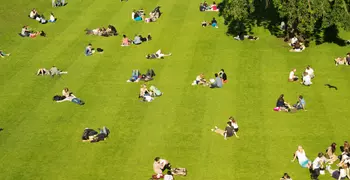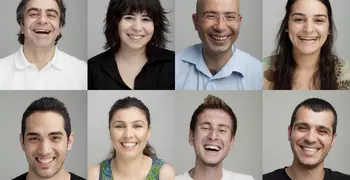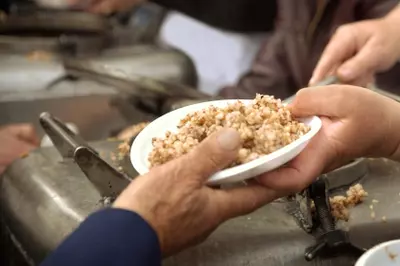
There are many ways, big and small, that give you the opportunity to help your community on the path to wellbeing.
Give back to your community
The Red Cross’ slogan “Give blood. All you'll feel is good." has turned out to be empirically true. New research indicates that people experience an elevation in mood after donating blood or volunteering time for a greater cause. Some volunteers get a "helper's high"—they feel stronger, more energetic, and more motivated after helping others even in the smallest ways.
Tom Rath explains this in his book, Wellbeing: “When we surveyed more than 23,000 people on this topic, nearly 9 in 10 reported getting an emotional boost from doing kind things for other people.” Furthermore, Rath cites neuroscientists who have found that there is a region in the brain that lights up when money is received but lights up even more brightly when money is donated.
So, volunteering or giving to charity is a distinct activity that can improve both the health of the individual and the health of the overall community at the same time.
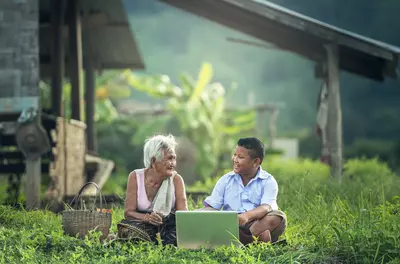
"Do-gooders" thrive
Gallup polls across 130 countries show that people with higher personal wellbeing are more likely to say they give time, money, or help to their communities. In fact, do-gooders are twice as likely to consider themselves "thriving," rather than "suffering."
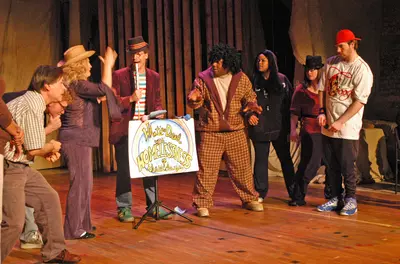
An inspirational story
Read Lecia Grossman's story of how she turned her passion for theatre into something that transformed her community.
An Inspirational Story
Lecia Grossman was an organizational trainer in Minneapolis who had a deep passion to do something about homelessness. “Every time I saw someone on the street… I knew nobody was looking at them like a human being. That was 20 years of feeling this intense hurting.”
Although Lecia was not a theater artist, she gathered people together and partnered with St. Stephen’s Human services to create zAmya Theater, a forum where housed and homeless performers collaborate to tell and perform stories.
“I didn’t want to do something for homeless people; I wanted to do something with them,” Lecia explained. Through performances and dialogue, zAmya generates awareness and understanding of homelessness while raising the spirits of people affected by homelessness through performance art.
How did Lecia come up with a theater company as a way to transform her community? “If you ever start thinking about how you want to change the world, don’t forget to ask this one question: What would make it fun?”
Want to learn more? Watch an interview with Lecia Grossman.
Involve yourself
Here are just a few ways to give back and engage in community.
- Volunteer
- Vote
- Take leftover dinner to an elderly neighbor
- Share the positive aspects of your community with other people
- Take a garbage bag with you on your walks through the neighborhood
- Buy and shop locally
- Be involved in community or other forms of informal education
- Donate to your local food shelf
- Organize and help maintain a community garden
- Arrange a group to attend a local ethnic festival or community theater performance
Empower yourself and others
As we have noted, individual empowerment contributes to overall community wellbeing, especially when individuals can influence policy decisions. And anyone can do this, simply by staying informed and responding. You don’t need special skills or leadership abilities, just the desire to participate. It can be as simple as sending an email to a policy maker or attending a community meeting on an issue. By doing so, you may well find that you are raising the voice of the silent majority.
Citizen healthcare is a wonderful example of regular citizens effecting policy and making large changes in their community. In one impoverished community, participants met in groups to identify health issues and solutions. As they did, they saw ways that they themselves could participate and became an activated community. William Doherty, an early advocate of this type of healthcare, explains that they became “individuals and families who see themselves as builders of health in the clinic and community—rather than merely as consumers of medical services.”
Believing that you can effect change is the first step.
Take gentle action
 It takes time to effect change, so it is important to set small goals that you can achieve and build a sense of efficacy.
It takes time to effect change, so it is important to set small goals that you can achieve and build a sense of efficacy.
Gentle action, as envisioned by David Peat, brings about desirable change in society through small actions. He gives the example of the neighbor who decides to address neighborhood crime by introducing herself to all her neighbors and creating a neighborhood block group.
Regardless of the small step you take, you need to respond flexibly to whatever happens. You may need to repeat or build on your action, and then give it time, watching patiently for signs of change.
Consider the role of infrastructure
What can be done to connect people in different ways and foster community? Urban planning, architecture, and parks can all create “spaces” for people to gather and share their stories and build bonds. They can also be created to encourage and support healthy lifestyle behaviors. Do you have community centers, libraries, parks, internet access, and other resources in your community, and are they being used optimally? Talk or write to the boards or governing groups of these resources if you have ideas for improvement.
Some of the change you may want to see in your community will concern the limitations of the infrastructure or issues of inequity around access to community resources. Remember the ideas behind gentle action and building social capital and incorporate these concepts into your plan.
Doherty, W. J., & Mendenhall, T. J. (2006). Citizen health care: A model for engaging patients, families, and communities as coproducers of health. Families, Systems, & Health, 24(3), 251.
Fifer, S. Sloan Fifer, S. (1994). 50 Ways to Help Your Community. New York: Doubleday.
Helliwell, J., Putnam, R. (2005). The social context of well-being. In Huppert, F., Baylis, N., Keverne, B. (Eds.), The science of well-being. Oxford: Oxford University Press.
Neighborhoods Task Force (SNTF) of Toronto. (2004). Role of Community Infrastructure in Building Strong Neighborhoods. Accessed April 14, 2013 at http://www.toronto.ca/demographics/sntf/rp2.pdf
Peat, F.D. (2005). Gentle action: Bringing creative change to a turbulent world. Pari, Italy: Pari Publishing.
Putnam, R. D., & Feldstein, L. (2004). Better together: Restoring the American community. New York: Simon & Schuster.
Rath, T., Harter, J. (2010). Wellbeing: The five essential elements. New York: Gallup Press.
